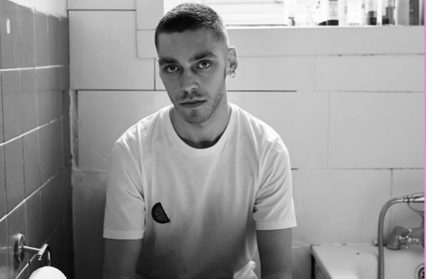Taylor Edmonds travels to The Other Room to cast a critical eye over Willy Hudson’s comedic one-man show, Bottom.
Bringing The Other Room’s Spring Fringe to a close, Bottom, Willy Hudson’s comedic one-man show unpicks what it means to be queer and lonely in a generation that searches for love through substance-fuelled one night stands and swiping right on Tinder.
Hudson breaks the barrier between audience and performer from the very beginning, bursting onto stage in nothing but a pink towel, searching for his clothes which are hidden underneath the audience’s seats. This intimacy runs throughout the show, as Hudson squeezes in with the audience and gives members his phone to hold. He lets us in on his sex life, his quest for love, his mental health. It’s Hudson’s honesty and openness that encourages the audience to be comfortable and to get invested in his story. The performance feels casual, barely acted, so that by the end of the show you feel you’ve just been told a story by a close friend.
The storytelling in Bottom is non-linear, it jumps around as Hudson himself jumps around the pink, Beyoncé-shrine set. In one timeline, Willy is serving burnt fish to his date, his only date who hasn’t asked the deal-breaking top or bottom? question. In another he is working at one of his four part-time jobs, a London burger joint, with a manager that just loves gay guys. In another, he is locked in the bathroom trying to feel ready to be the Top in a sexual encounter. The movement is chaotic, and it can be difficult to keep up at times. Though the chaos reflects the whirlwind that is Willy’s life at the time, and direction from Rachel Lemon helps to keep the chaos at bay. The re-occurring mantra also helps to focus the course of the narrative — Hudson returns to a moment with the bottom half of chocolate-smeared shop mannequin representative of his own body — and analyses the progress of his love for Beyoncé, his self-esteem and his quest for love.
There’s light-hearted, belly-laugh inducing moments, there’s Beyoncé (a lot of Beyoncé), a pink ukulele and chocolate spread but also so much more that’s explored. Sound design by Tic Ashfield fits the tone of each scene perfectly, enhancing the emotion in some and the energy of others. Bottom is going to make you laugh but it’s also going to make you think about queer identity, being working class, the fetishisation of gay men and sexual anxiety. It’s so important to see the queer experience told beyond the stock queer character, beyond the coming out story — though of course, that’s part of it. Hudson challenges the gay male stereotypes that echo those of heterosexual ones; the effeminate ‘bottom’ and the machoistic ‘top’. When Willy Hudson loves both dancing to Beyoncé and drinking pints at the pub, who decides where he fits?
These anxieties and struggles are relatable to many regardless of your sexual orientation. Navigating the influence of technology on dating apps that encourage no-strings-attached casual sex can make seeking genuine connections difficult. There are things that will be assumed about you because of your identity, whether they apply to you or not. There is comfort to be found in Bottom in that it reassures that nobody has it all figured out. To explore queer culture and identity with such honesty, not afraid to criticise, shouldn’t be brave, but it is. Willy Hudson is opening himself up for all to see, we owe it to him, and ourselves, to listen.
You might also like…
Norena Shopland casts an eye over the recent trend of queer tours of museum collections and sees postcards from the edge of history.
Taylor Edmonds is a regular contributor to Wales Arts Review.












